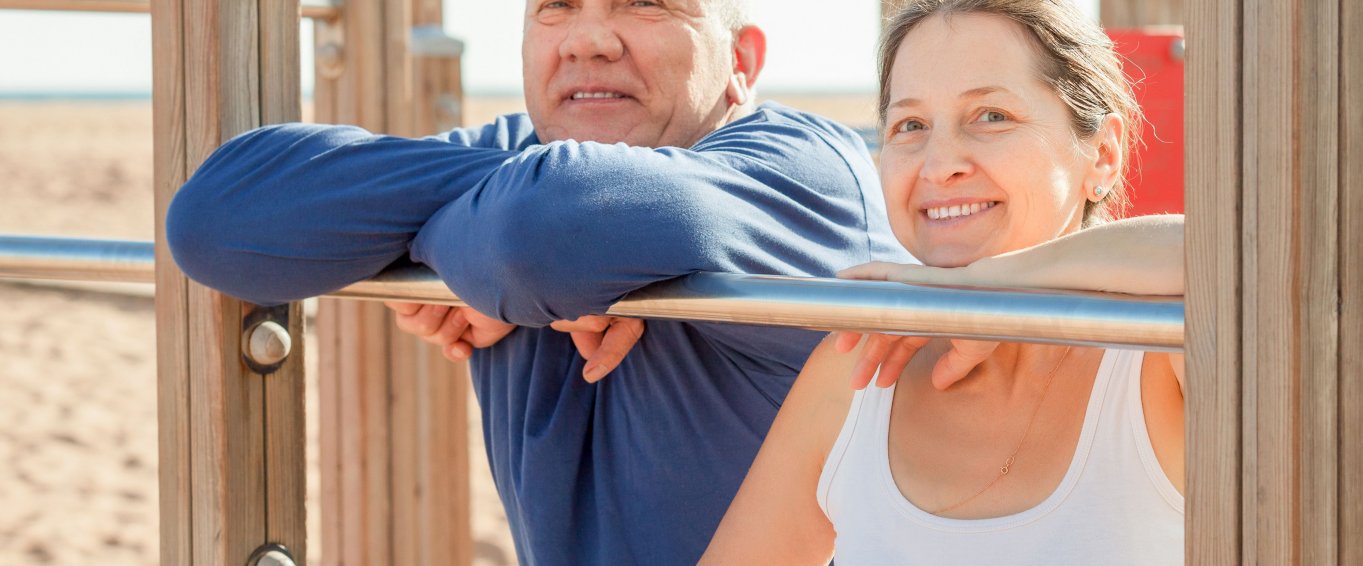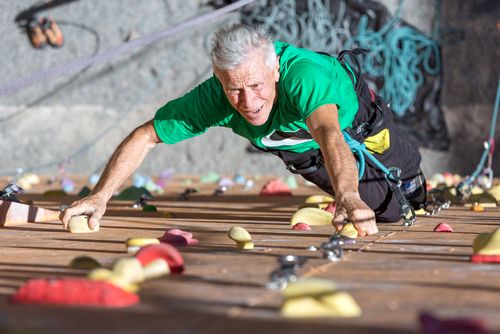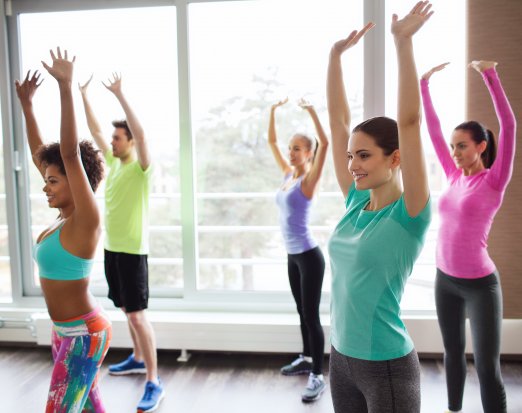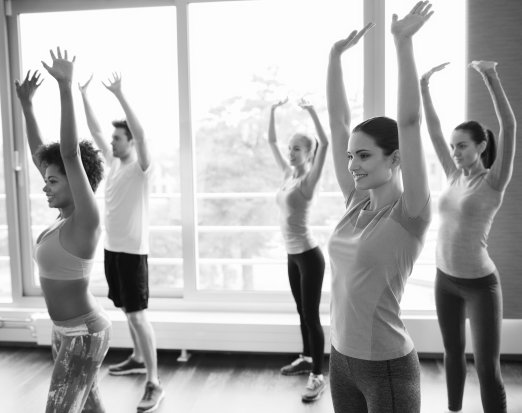Fitness over 50: How to keep active for life

As we get older, it becomes more important to look after ourselves by keeping fit. Everybody wants to look younger, but maintaining fitness over 50 is much more than just staying in shape to look good; exercise can significantly improve our quality of life.
From the age of 30 our muscle fibres begin to lose density which means we become weaker and less able to perform everyday movements such as walking, standing and sitting. A reduction of strength in our muscles, especially the legs, increases the risk of falling and seriously injuring ourselves. Around 1 in 3 adults over the age of 65 fall at least once in a year according to data by the NHS, and this risk is greater if someone suffers from a pre-existing medical condition. While these falls can lead to physical pain such as broken bones, they can also lead to psychological damage by taking away a person's independence and confidence.
Keeping fit for life
John Edmondson is the author of 50+ fit for life through middle age and beyond, a book which acts as a guiding light for older people on the quest for health and fitness. John is also one of the most recent experts to join the Amaven team and will be working with us to create exercise solutions that cater for people over the age of thirty.
“As middle aged people, most of us have dealt with the deteriorating health of our parents, and this makes us think about our own future. Live for today, is some people’s attitude. You never know what’s around the corner. Live every day as it comes, you never know when it will be your last. I totally agree, why not enjoy every day as much as you can? We work hard so we should play hard right? But what if this living for today, work hard play hard attitude is accelerating our ageing process and pushing us into poor health so we may not be able to enjoy our retirement?” John hits the nail on the head as he explains the importance of keeping fit to create a healthier future in the introduction of his book.
Functional training

Our bodies cope with a number of different situations on a daily basis, from running across the road, to climbing the stairs and picking up the shopping bags. As we get older and our fitness decreases, we become less able to deal with these situations as effectively and every day movements become more challenging. We can reverse this process by implementing functional training into our exercise routines, which mimic everyday patterns of movement and utilise multiple muscle and joint groups at once.
Functional training can be completed without weights, although adding weight to the movements will improve your strength and promote weight loss. This creates resistance while you perform the movements, which makes your muscles work harder. However, John recommends perfecting the technique and being able to complete the full range of motion before adding weight.
“Resistance exercise can reduce bone deterioration, and build bone mass, preventing osteoporosis. This is important as we get older, particularly for the ladies. Sarcopenia is also held back or reversed; this is the age related loss of muscle mass, strength and function, and after the age of 35 there is a loss of 3-5% of muscle mass per decade, without muscle mass your metabolism slows down and you start to gain fat.” John wrote.
He continued, “If you have not worked with weights before, start by using the correct form (using the full range of movement for each exercise) and use light weights until you are comfortable with the techniques. Then as you progress, and get fitter and stronger, you will alter your number of reps, or the amount of weight you use, or technique you use, to keep your body from having to adapt to the different challenges you are throwing at it. This system is called progressive overloading, and is essential to any fitness programme.”
John’s essential exercises for 40+
To develop strength and stability, John recommends that you should focus on compound movements that engage the full body.
Squats – this is the king of all compound exercises and you can easily alter it to make it progressively harder, or easier. Starting with a bodyweight squat, you can hold onto the back of a chair for support when you are learning the move, you should aim get low enough so that your knees are beneath your hips.
Lunges – This is another exercise that focuses on the posterior chain, which is essential for strength and stability. Practise standing lunges on alternative legs and once you feel confident you can progress to walking lunges holding a bar above your head.
Press-up variations– A fundamental movement for developing strength and stability. Ideally you would complete this exercise with a full range of motion, but if it’s too difficult to complete a press up on the floor, switch to your knees or perform a standing press up.
Active body, happy brain
Research has found that people who take up exercise in later life are three times more likely to stick with it for the rest of their lives.
A study published in the British Journal of Sports Medicine tracked the health of 3,500 people with an average age of 64 for more than eight years and found that sustained physical activity was linked to healthy ageing, including the absence of disease, freedom from disability, high cognitive and physical functioning, and good mental health.
There is also a strong link between regular exercise and improved brain function, for example a study by the University of British Columbia found that consistent aerobic exercise boosted the size of the hippocampus in mice, the area of the brain involved in verbal memory and learning. Exercise also indirectly boosts brain function, by stabilising mood and sleep. Additionally, older people who regularly take part in group exercise are less at risk of feeling lonely or depression and they develop a greater sense of independence and confidence. If that wasn’t enough to convince you to get moving, a study by the American Journal of Medicine revealed that older adults with higher muscle mass live longer compared to those with lower mass.
Never miss out on a blog post again, subscribe to our mailing list to receive expert information and articles straight in your inbox.





